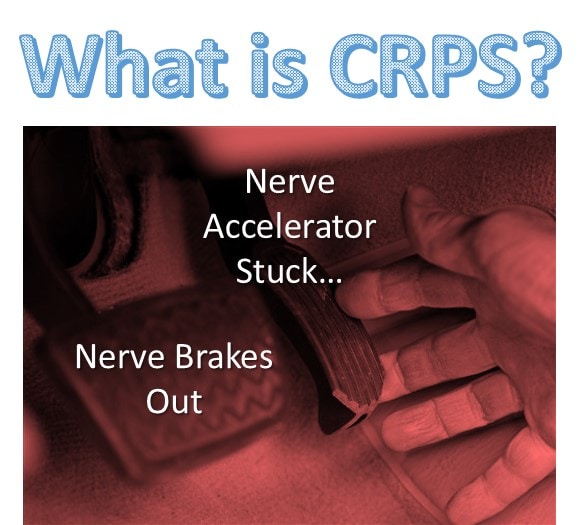What is CRPS? Does Regenerative Medicine Have a Role?
Is there a CRPS alternative treatment? CRPS means complex regional pain syndrome and it’s a nasty nerve disease that’s almost untreatable. Why? The best way to understand why is to conceptualize what CRPS is and how it works. Let’s say the speed of your car represents nerve pain. Most of us have a system to accelerate that pain in normal healing (the gas) and also a system to slow it down or stop it (the brakes). CRPS is what happens when the brakes are out and the accelerator is stuck in the “to the floor” position. In general, CRPS is such a problem, because we don’t know how to restore the brakes. I’ve blogged a few times about the positive effects of using nerve hydo-dissection on patients with chronic nerve injury. We’ve been a bit cautious about this procedure, as the common wisdom is that an injection can’t help nerves regenerate. We’re still not sure that’s what we’re seeing in select patients, but Dr. Hanson who has pioneered this technique has been steadily showing me patient after patient where there is significant improvement. Case in point this morning is a patient with a two year history of CRPS type 2 (nerve injury) caused by a surgery. She received an ultrasound guided nerve hydro-dissection procedure with Dr. Hanson in August of this year and we just received this e-mail:
“Dr Hanson-
Just wanted to let you know Nicole has begun to have some temperature sensations on the bottom of her foot. Last week, she said that she could feel the floor was cold. This is the first time since the surgery in 2010 that she has had this sensation. Also, her pain continues to be improved. She has gone from 600 mg neurontin per day to 450mg. She is going to try going down to 300mg. Nicole has also started running a little and is thrilled! So, all good news. We’ll see you in January.
Merry Christmas to you and the Regennex team!”
So we are cautiously optimistic and will continue to monitor these patients.

If you have questions or comments about this blog post, please email us at [email protected]
NOTE: This blog post provides general information to help the reader better understand regenerative medicine, musculoskeletal health, and related subjects. All content provided in this blog, website, or any linked materials, including text, graphics, images, patient profiles, outcomes, and information, are not intended and should not be considered or used as a substitute for medical advice, diagnosis, or treatment. Please always consult with a professional and certified healthcare provider to discuss if a treatment is right for you.

